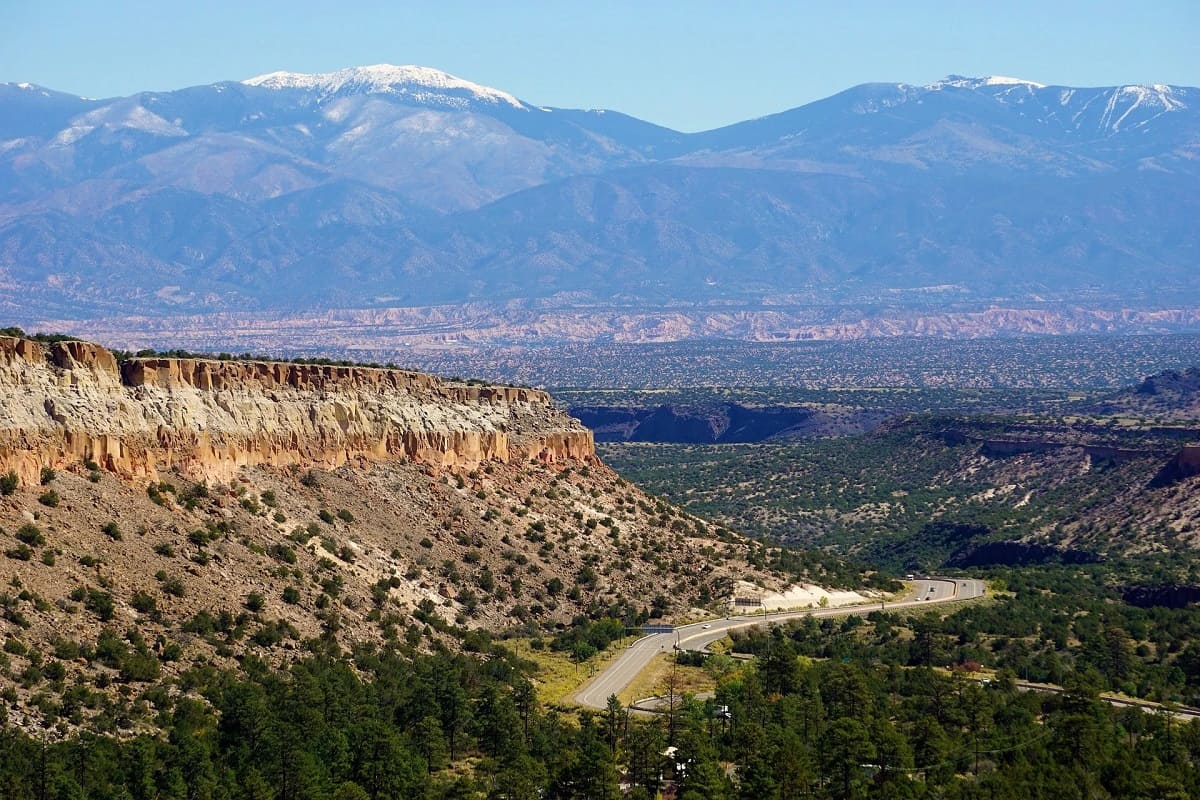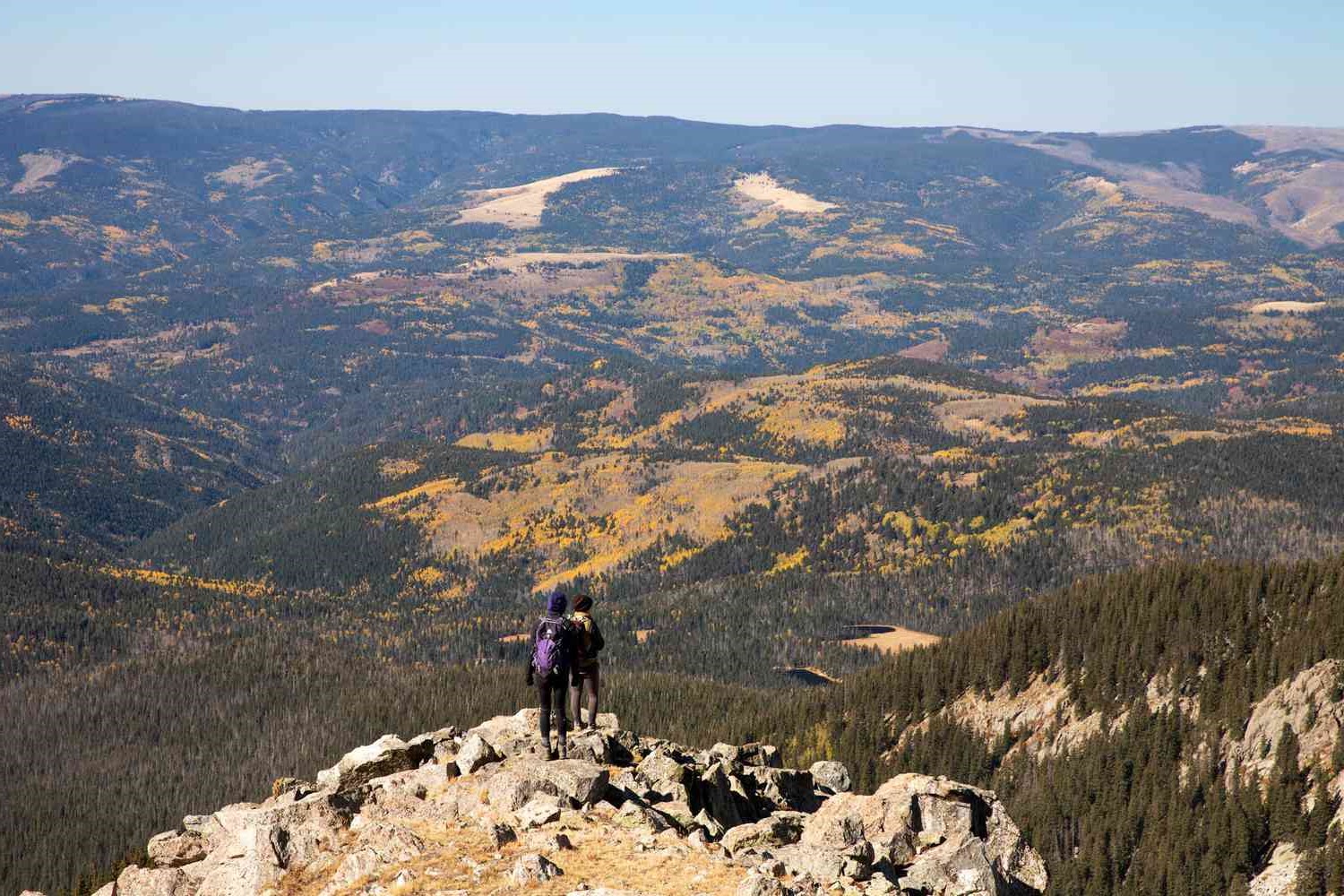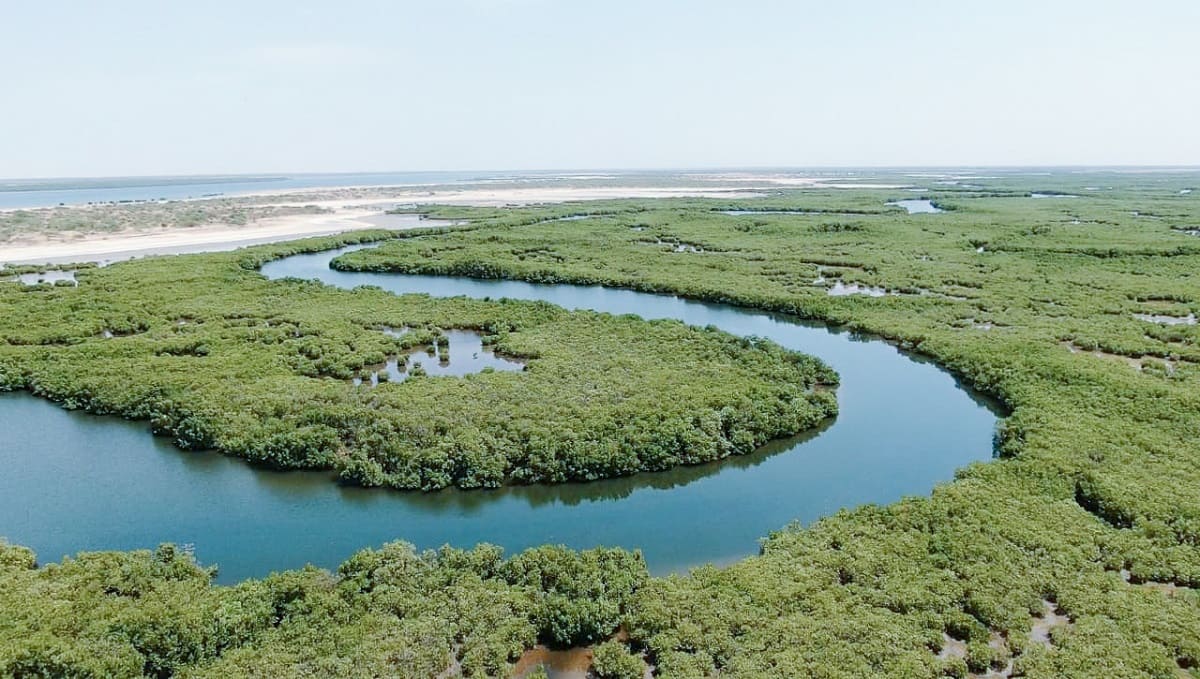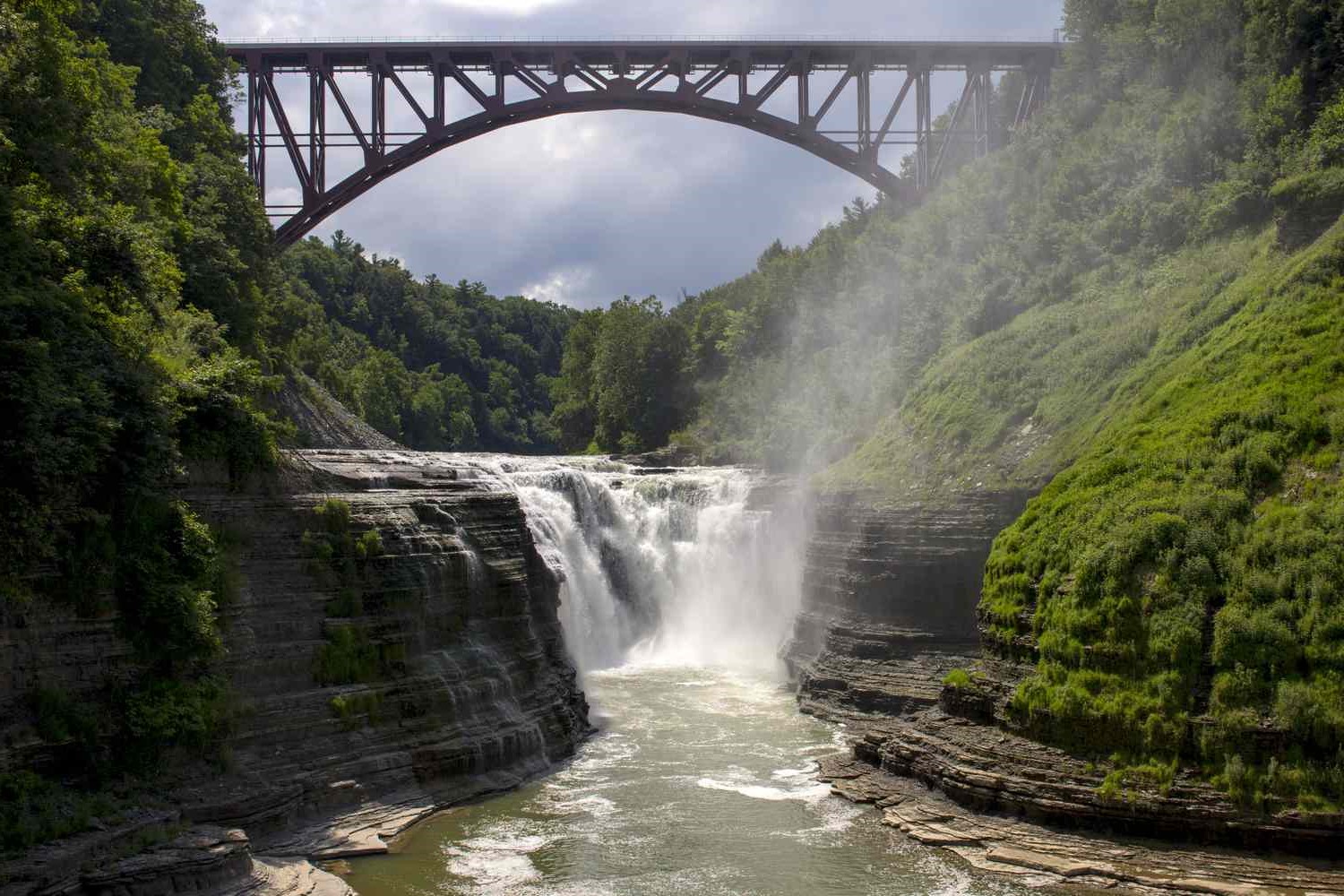Home>Weather and Climate>Understanding The Climate Of New Mexico: A Comprehensive Guide


Weather and Climate
Understanding The Climate Of New Mexico: A Comprehensive Guide
Published: March 1, 2024
Discover the diverse weather and climate of New Mexico with our comprehensive guide. Gain insights into the region's unique climate patterns and seasonal variations.
(Many of the links in this article redirect to a specific reviewed product. Your purchase of these products through affiliate links helps to generate commission for Temperatures.com, at no extra cost. Learn more)
Table of Contents
Introduction
Welcome to the Land of Enchantment, where the diverse landscapes and rich cultural heritage of New Mexico are complemented by its unique climate. Nestled in the southwestern United States, New Mexico boasts a captivating blend of high desert plains, rugged mountains, and expansive plateaus. The state's climate is as varied as its terrain, offering a fascinating tapestry of weather patterns and climatic conditions.
In this comprehensive guide, we will delve into the intricate details of New Mexico's climate, exploring its geographical and topographical influences, weather patterns, climate zones, and the impact of climate change. Additionally, we will highlight the conservation efforts aimed at preserving the state's natural resources and mitigating the effects of environmental changes.
Join us on an enlightening journey through the dynamic climate of New Mexico, where the convergence of natural forces and human stewardship shapes the environmental landscape. Let's embark on this exploration to gain a deeper understanding of the factors that contribute to the unique and ever-evolving climate of the Land of Enchantment.
Read more: Mexico’s Winter Chill Facts
Geography and Topography of New Mexico
Nestled in the southwestern region of the United States, New Mexico is renowned for its diverse and captivating geography. The state's topography encompasses a remarkable array of landscapes, including expansive deserts, rugged mountains, and verdant forests. The southern portion of New Mexico is characterized by the Chihuahuan Desert, known for its arid climate and vast stretches of mesas and desert plains. As one moves northward, the terrain transitions into the stunning peaks and valleys of the Rocky Mountains, offering a stark contrast to the southern desert regions.
The Rio Grande, one of the longest rivers in North America, flows through the heart of New Mexico, carving a deep and majestic gorge as it meanders through the landscape. This iconic river not only serves as a vital water source but also contributes to the state's diverse ecosystems and agricultural productivity.
The elevation of New Mexico varies significantly, with the average elevation exceeding 5,700 feet. The state is home to numerous peaks that soar well above 10,000 feet, including Wheeler Peak, the highest point in New Mexico. The elevation variations play a pivotal role in shaping the climate, as higher altitudes often experience cooler temperatures and distinct weather patterns compared to lower-lying areas.
The unique geography and topography of New Mexico create a tapestry of microclimates, each with its own distinct characteristics. From the high desert plains of the south to the alpine tundra of the northern mountains, the state's diverse landscapes contribute to a rich tapestry of climates and ecosystems.
The interplay between elevation, terrain, and proximity to the Gulf of Mexico influences precipitation patterns, temperature fluctuations, and the distribution of flora and fauna across the state. This intricate relationship between geography and climate sets the stage for the captivating weather patterns and climatic diversity that define the Land of Enchantment.
In the next section, we will delve into the captivating weather patterns that unfold across the varied landscapes of New Mexico, offering a deeper insight into the dynamic atmospheric phenomena that shape the state's climate.
Weather Patterns in New Mexico
New Mexico's weather patterns are as diverse as its landscapes, offering a captivating blend of climatic phenomena that unfold across the state. The interplay of geographical features, elevation differentials, and atmospheric dynamics gives rise to a wide spectrum of weather conditions, making New Mexico a fascinating study in meteorological diversity.
The state experiences a predominantly arid climate, particularly in the southern regions where the Chihuahuan Desert holds sway. Summers in these desert areas are characterized by scorching temperatures, often exceeding 100°F, while winters bring relatively mild conditions with occasional cold snaps. The arid climate fosters vast expanses of desert flora, including iconic species such as the resilient yucca and the majestic saguaro cactus.
Moving northward, the climate transitions to a semi-arid and continental climate, with the central and northern regions of New Mexico experiencing distinct seasonal variations. Summers bring warm to hot temperatures, while winters can be surprisingly cold, especially in the higher elevations. The state's capital, Santa Fe, exemplifies this climatic diversity, with its high elevation contributing to cooler summers and cold, snowy winters.
The mountainous regions of northern New Mexico, including the Sangre de Cristo and Jemez Mountains, exhibit alpine and subalpine climates, characterized by cooler temperatures and more abundant precipitation. These areas are a haven for outdoor enthusiasts, offering respite from the summer heat and ample opportunities for winter sports during the snowy months.
New Mexico's weather patterns are also influenced by the North American Monsoon, which brings a surge of moisture from the Gulf of Mexico during the summer months. This seasonal shift in wind patterns leads to an increase in thunderstorm activity, particularly in the central and southern portions of the state. The dramatic thunderstorms not only provide much-needed rainfall but also contribute to the awe-inspiring spectacle of the state's monsoon season.
The state's diverse weather patterns create a dynamic tapestry of climatic experiences, offering something for everyone, from desert aficionados to mountain adventurers. The intricate interplay of geographical features, elevation differentials, and atmospheric dynamics gives rise to a wide spectrum of weather conditions, making New Mexico a captivating canvas of meteorological diversity.
In the following section, we will delve into the distinct climate zones that define New Mexico, shedding light on the varied environmental tapestry that shapes the state's natural landscapes.
Climate Zones in New Mexico
New Mexico's diverse geography gives rise to a rich tapestry of climate zones, each with its own unique characteristics and environmental dynamics. The state is broadly classified into several distinct climate zones, each contributing to the overall climatic diversity of the region.
-
High Desert Climate: The southern regions of New Mexico, including areas encompassing the Chihuahuan Desert, exhibit a high desert climate characterized by arid conditions and relatively low annual precipitation. The scorching summers and mild winters define this climate zone, shaping the iconic desert landscapes that are synonymous with the American Southwest.
-
Semi-Arid and Continental Climate: Central and northern New Mexico fall within the semi-arid and continental climate zones, where the interplay of elevation and atmospheric dynamics gives rise to distinct seasonal variations. Summers bring warm to hot temperatures, while winters can be surprisingly cold, especially in the higher elevations. This climate zone encompasses a significant portion of the state's diverse landscapes, including the iconic mesas, plateaus, and mountain ranges.
-
Alpine and Subalpine Climate: The mountainous regions of northern New Mexico, including the Sangre de Cristo and Jemez Mountains, exhibit alpine and subalpine climates characterized by cooler temperatures and more abundant precipitation. These high-elevation areas create a haven for diverse flora and fauna, fostering unique ecosystems that thrive in the cooler and moister conditions.
-
Riparian and Riverine Climates: The presence of the iconic Rio Grande and other waterways in New Mexico gives rise to riparian and riverine climates, where the proximity to water sources influences local weather patterns and supports lush vegetation along the riverbanks. These unique microclimates contribute to the overall ecological diversity of the state, providing vital habitats for a myriad of plant and animal species.
-
Urban Heat Island Effect: Urban areas, including Albuquerque and Santa Fe, exhibit the urban heat island effect, where the concentration of human activities and infrastructure leads to localized temperature variations. This phenomenon underscores the intricate relationship between human settlements and climatic influences, highlighting the dynamic interplay between urban environments and natural climate patterns.
The diverse climate zones of New Mexico create a captivating mosaic of environmental conditions, each contributing to the state's rich natural heritage. From the arid expanses of the southern deserts to the alpine splendor of the northern mountains, New Mexico's climate zones offer a compelling glimpse into the intricate interplay of geographical, atmospheric, and ecological factors that define the Land of Enchantment.
Impact of Climate Change on New Mexico
Climate change poses significant challenges to the environmental landscape of New Mexico, exerting far-reaching impacts on the state's ecosystems, water resources, agriculture, and overall resilience to environmental shifts. The effects of climate change manifest in various forms, amplifying existing vulnerabilities and necessitating proactive measures to mitigate potential repercussions.
One of the most pronounced impacts of climate change in New Mexico is the alteration of precipitation patterns, leading to heightened variability and increased frequency of extreme weather events. The state has witnessed shifts in precipitation distribution, with some regions experiencing prolonged droughts while others contend with intensified rainfall and flooding. These fluctuations pose challenges for water management, agricultural productivity, and ecosystem stability, underscoring the need for adaptive strategies to address the evolving precipitation dynamics.
Rising temperatures associated with climate change have implications for New Mexico's diverse ecosystems, particularly in high-elevation areas and sensitive habitats. The warming trend contributes to the melting of snowpack and glaciers, impacting water availability and streamflow patterns. Furthermore, elevated temperatures can exacerbate heat stress on flora and fauna, potentially disrupting ecological balance and species distributions.
The agricultural sector, a cornerstone of New Mexico's economy, faces multifaceted challenges stemming from climate change. Shifts in temperature and precipitation regimes influence crop yields, water availability for irrigation, and the prevalence of pests and diseases. Farmers and ranchers are compelled to adapt to changing climatic conditions, implementing innovative practices to enhance resilience and sustainability in the face of environmental uncertainties.
Additionally, the increased frequency and intensity of wildfires in New Mexico are linked to climate change, posing significant threats to forest ecosystems, air quality, and public safety. The intersection of prolonged drought, elevated temperatures, and fuel accumulation creates conducive conditions for wildfire outbreaks, necessitating robust fire management strategies and community preparedness efforts.
The impact of climate change on New Mexico extends beyond environmental realms, encompassing socioeconomic and public health dimensions. Vulnerable communities, including indigenous populations and low-income households, may face heightened risks due to climate-related disruptions, emphasizing the imperative of equitable adaptation and resilience-building initiatives.
In response to these challenges, New Mexico has embarked on initiatives to address climate change impacts, including the development of climate action plans, investment in renewable energy infrastructure, and the implementation of sustainable land and water management practices. These proactive measures aim to enhance the state's capacity to adapt to environmental changes and foster a more resilient and sustainable future for all residents.
The evolving landscape of climate change underscores the interconnectedness of environmental, societal, and economic systems, emphasizing the need for collaborative efforts to mitigate risks and embrace adaptive strategies. By acknowledging the multifaceted impacts of climate change and prioritizing informed decision-making, New Mexico endeavors to navigate the complexities of a changing climate while safeguarding its natural heritage and fostering a thriving and resilient future for generations to come.
Conservation Efforts in New Mexico
New Mexico is dedicated to preserving its natural landscapes and fostering sustainable practices through a myriad of conservation efforts. These initiatives encompass a wide spectrum of environmental stewardship, ranging from the protection of iconic wilderness areas to the promotion of renewable energy and the implementation of innovative conservation strategies.
The state boasts an extensive network of protected areas, including national parks, wildlife refuges, and wilderness preserves, which serve as havens for diverse ecosystems and wildlife species. Notable examples include the Gila Wilderness, the nation's first designated wilderness area, and the Bosque del Apache National Wildlife Refuge, renowned for its critical habitat for migratory birds. These protected areas not only safeguard biodiversity but also provide opportunities for outdoor recreation and environmental education, fostering a deeper connection between people and nature.
In addition to preserving natural habitats, New Mexico is at the forefront of renewable energy development, leveraging its abundant solar and wind resources to advance clean energy initiatives. The state's commitment to renewable energy expansion is exemplified by the growth of utility-scale solar and wind projects, as well as the promotion of distributed solar generation and energy efficiency measures. These endeavors contribute to reducing greenhouse gas emissions, enhancing energy security, and fostering a more sustainable energy landscape.
Furthermore, New Mexico prioritizes water conservation and sustainable land management practices to address the challenges posed by a changing climate and growing water demands. The state actively engages in watershed restoration, erosion control, and sustainable forestry practices to promote healthy ecosystems and mitigate the impacts of drought and wildfire. Collaborative efforts with local communities, tribal nations, and conservation organizations underscore the collective commitment to preserving the state's natural resources and enhancing ecological resilience.
The conservation ethos of New Mexico extends to wildlife management and habitat restoration, with a focus on protecting imperiled species and restoring degraded ecosystems. Conservation programs aimed at reintroducing native species, such as the Mexican gray wolf and the Rio Grande cutthroat trout, exemplify the state's dedication to preserving biodiversity and restoring ecological balance.
Moreover, New Mexico embraces sustainable agriculture and land stewardship practices, supporting initiatives that promote soil health, water conservation, and regenerative farming techniques. By fostering partnerships with farmers, ranchers, and landowners, the state endeavors to enhance agricultural sustainability and promote the coexistence of productive landscapes and thriving ecosystems.
The collaborative spirit of conservation in New Mexico underscores the shared responsibility of individuals, communities, and governmental entities in safeguarding the state's natural heritage. Through a holistic approach that integrates conservation, renewable energy development, sustainable land management, and community engagement, New Mexico strives to cultivate a resilient and vibrant environmental landscape that sustains both the natural world and the well-being of its inhabitants.
Conclusion
In conclusion, the climate of New Mexico embodies a captivating tapestry of geographical, meteorological, and ecological intricacies, shaping the state's diverse landscapes and environmental dynamics. From the arid expanses of the Chihuahuan Desert to the alpine splendor of the northern mountains, New Mexico's climate zones offer a compelling glimpse into the intricate interplay of geographical, atmospheric, and ecological factors that define the Land of Enchantment.
The state's unique geography, characterized by rugged mountains, expansive deserts, and the iconic Rio Grande, influences weather patterns and climatic diversity, creating a dynamic mosaic of environmental conditions. The interplay of elevation, terrain, and proximity to the Gulf of Mexico contributes to the captivating blend of climatic phenomena that unfold across the state, offering something for everyone, from desert aficionados to mountain adventurers.
However, New Mexico is not immune to the challenges posed by climate change, which manifests in altered precipitation patterns, rising temperatures, and increased frequency of extreme weather events. These environmental shifts have far-reaching implications for ecosystems, water resources, agriculture, and public health, underscoring the imperative of proactive measures to mitigate potential repercussions and foster resilience.
Amidst these challenges, New Mexico remains steadfast in its commitment to conservation, renewable energy development, and sustainable land and water management practices. The state's dedication to preserving natural landscapes, promoting renewable energy, and fostering collaborative conservation efforts exemplifies a collective commitment to safeguarding the state's natural resources and enhancing ecological resilience.
As New Mexico navigates the complexities of a changing climate, the interconnectedness of environmental, societal, and economic systems underscores the need for collaborative efforts to mitigate risks and embrace adaptive strategies. By acknowledging the multifaceted impacts of climate change and prioritizing informed decision-making, New Mexico endeavors to cultivate a resilient and vibrant environmental landscape that sustains both the natural world and the well-being of its inhabitants.
In essence, the climate of New Mexico is a testament to the enduring interplay of natural forces and human stewardship, where the convergence of geographical, meteorological, and ecological dynamics shapes a landscape of unparalleled beauty and environmental significance. As the Land of Enchantment continues to evolve, its climate remains a source of inspiration and a call to action, inviting all to embrace the collective responsibility of preserving and nurturing the state's natural heritage for generations to come.














